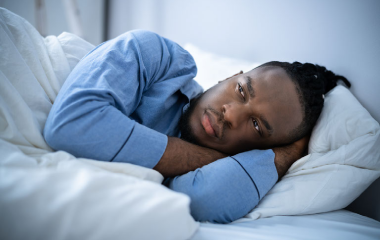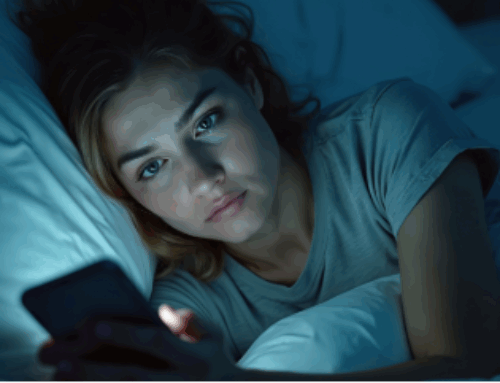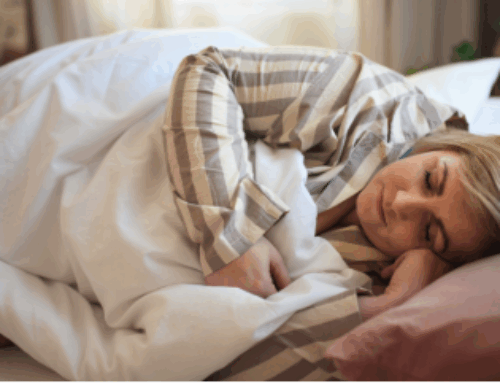The “Mind after Midnight” hypothesis suggests that late-night wakefulness affects the brain, leading to changes that can make you more likely to view the world negatively, engage in harmful behaviors, and make impulsive decisions.
We sat down with one of the study’s authors, Andrew Tubbs, from the University of Arizona College of Medicine – Tucson, to answer some questions.
First, could you give us an overview of what the “Mind after Midnight” hypothesis means?
I think everyone knows that getting good sleep is important for thinking clearly and making good decisions, mostly because we’ve all felt stupid and made bad choices after a bad night of sleep. But the amount of sleep you have is just one part of a bigger puzzle because sleep happens in the context of our circadian rhythms, the 24-hour cycles in which we live our lives. These rhythms are why, even after a bad night of sleep, we can get up and be awake and alert during the day—our brains are organized around being as functional as possible at that time. What’s important is that the opposite is true at night: Our circadian rhythms reduce wakefulness and alertness at night to help us go to sleep. All the “Mind after Midnight” hypothesis proposes is that people are more likely to make bad decisions when they haven’t had enough sleep and they’re awake when their circadian rhythms are telling them to be asleep. For most people, that’s between 2 to 3 AM, hence “Mind after Midnight.”
All the “Mind after Midnight” hypothesis proposes is that people are more likely to make bad decisions when they haven’t had enough sleep and they’re awake when their circadian rhythms are telling them to be asleep.
What would you say is the most surprising finding?
What surprised me was how the risk of dysregulated behaviors was consistently elevated at the same time. We looked at timing of suicide deaths, timing of homicide deaths, sleep/wake timing among folks with suicidal ideation in both community and national samples and kept getting the same answer: 2 to 3 AM. That’s when we started digging through the basic science on what happens to the brain in the middle of the night and pieced together the “Mind after Midnight” hypothesis.
The other surprising thing (or sad thing, depending on your view) is that there is so little data on dangerous behaviors during the middle of the night. We looked at dozens and dozens of studies and found a handful of times that researchers even looked at what people were doing at night. Hopefully, our hypothesis will motivate folks to look at outcomes during the night.
What do your findings mean for our readers?
What we know is that risk of suicide, adjusted for patterns of wakefulness, seems to be over three times higher at night than during the day. We have similar data for homicide deaths and the results so far are the same: more risk at night, less risk during the day. So, at this point, the evidence seems to be stacking up in the same direction. What we don’t quite know is why the risk is higher at night. This is the “hypothesis” part of the “Mind after Midnight” hypothesis because we hypothesize that the increased risk is due to natural circadian changes in the brain colliding with sleep deprivation to disrupt emotion processing, decision-making, and impulse control. That’s why we need more data to be sure.
Regardless of the reason risk is up at night, we’re still confident that it is. Thus, our best tool to mitigate this risk is still to get a good night of sleep, and for folks with sleep disorders like insomnia or sleep apnea, that means getting good, evidence-based treatments like cognitive behavioral therapy or positive airway pressure therapy.
Some people prefer to stay up late and sleep late. How does the “Mind after Midnight” hypothesis take late chronotypes, or “night owls,” into consideration?
Despite the name, the “Mind after Midnight” hypothesis doesn’t actually claim that risk is highest right after midnight for everyone. We think that risk is elevated because of sleep duration and circadian rhythms, so if you’re a night owl and you regularly go to sleep at 1 AM and wake up at 10 AM, your risk zone is probably closer to 6 or 7 AM. Conversely, a morning lark who goes to sleep at 8 PM and wakes up at 4 AM may have a risk zone around 11 PM to 12 AM. It all depends on the individual, on how much sleep you get, and how your circadian rhythms are organized.
Is there anything else you’d like to share?
It is very likely that not everyone experiences the same risk with being awake at night as everyone else. For some people, the risk may be minimal while for others it may be off the charts. This is why this is such an exciting research hypothesis, because it gives us the tools and framework for finding and explaining the differences between people.
Along those lines, I’ve seen comments from folks on Twitter about how being awake at night increases their creativity and inventiveness, and I think this actually fits into our hypothesis quite nicely. We think that one of the big drivers of risk is behavioral disinhibition, such that people say or do things they wouldn’t ordinarily say or do. For someone already suicidal, this could be extremely dangerous. But for someone creative (who isn’t also suicidal), this disinhibition may help them turn off their inner critic and push forward with new and exciting ideas. I just hope they don’t end up also cutting their ear off (like Van Gogh).
To read the full study, click here. To join the conversation about the “Mind after Midnight” hypothesis on Twitter, click here.
Authored by:
Kate Robards





